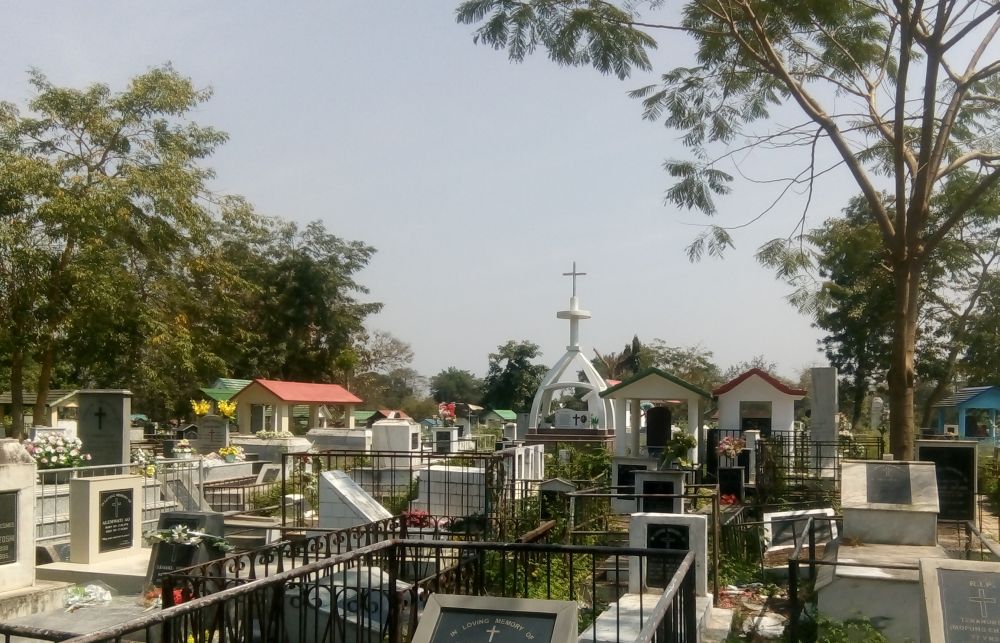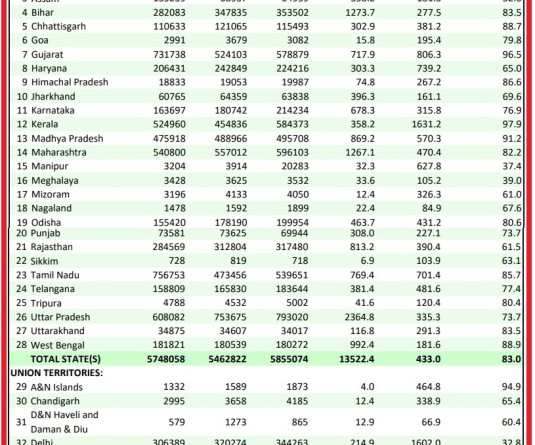Another pandemic dilemma: burials of possible COVID-19 related dead bodies

A view of the Naga Cemetery, Lake View Colony in Dimapur. (Morung File Photo)
Atono Tsükrü Kense
Kohima | April 18
The unpleasant ordeal faced by the family of the deceased veteran doctor from Shillong, who died of COVID-19 and was buried after more than 30 hours, should come as an eye-opener for any state to take stock of the situation and prepare itself for any worse case scenarios.
Like it or not, the highly contagious COVID-19 is here to stay for a while, and no one is immune to the virus.
Apart from the religious beliefs, rites and ceremonies, basing on the nature of emotional attachment with even the burial of our departed, it may be a tricky business or rather a problem for the government to maintain uniformity for COVID-19 related death burials, which may come sooner or later.
Accordingly, on April 13, the Nagaland State Disaster Management Authority (NSDMA), under Home Department, has come up with the Standard Operating Procedure (SOP) for disposal of dead bodies of COVID-19 in consonance with the guidelines issued by the Ministry of Health & Family Welfare, GoI.
Apart from step by step procedures to be followed by the health workers handling of dead bodies and transportation, the SOP stated “a maximum of four persons (the relatives and family members) shall be allowed to view the body at the time of removal from the isolation area or room and these people should not come in direct contact with doctors, nurses and paramedical staff of the hospital and they should maintain the standard precaution.”
The SOP further reads “the body will be either handed over to the relatives or taken to mortuary” and “in case of the body of the dead due to COVID-19 is not claimed by the family, the disposal of the body for cremation/burial will be carried out by the NDRF/SDRF/Police after proper disinfecting is done of the body and it is put in a body bag and thereafter in a coffin after following all the procedures.”
Lack of burial spaces
Lack of burial space in the existing cemeteries may come as a major setback, while on the other hand, refusal of the residents in and around the cemeteries for burial owing to fear of health hazards to the localities.
Speaking to The Morung Express, Naga Council Dimapur, Bangerloba informed that the existing cemetery has no space and overlapping of burial has been taking place for some time now. Development of a new burial site, he said, is on-going and on being asked in case of eventuality, if burial of COVID-19 deaths would be allowed, he said no discussion has taken place on this aspect yet.
A person in-charge of the cemetery revealed that the new burial ground was supposed to be commissioned this month, however, with the lockdown; it may have to be extended. However, the construction and development of the site, he informed, is going on. As per the DPR, it was informed that the new site for burial can last for 40-50 years.
Likewise, the common cemetery located at AG colony in Kohima has reportedly has no space. The lack of space is compounded with land encroachment by private individuals in the said area.
When enquired on the existing problems, Secretary to the Health & Family Welfare, Kesonyü Yhome said, “the government is aware of its shortcomings” and that all the district task forces under DCs have been asked to work out their district plans involving all related matters.
Not more than 10 people at burial ground
The SOP further instructed that at the crematorium/ burial ground the body should not be taken out from the sealed coffin and it should be buried/ cremated with the coffin.
Religious rituals such as reading from religious scripts, sprinkling holy water and any other last rites that does not require touching of the coffin are allowed, while gathering at the crematorium/ burial ground should not be more than 10 people and all social distancing measures should be followed at the funeral. The funeral/burial staff and family members should perform hand hygiene after cremation/burial, it said.
The NCD, on April 17, issued a notice informing the public to adhere to several measures during burial at Naga Cemetery, Lake View Colony. The measures include production of death certificate indicating nature and cause of death of the person; only two vehicles with limited number of persons will be allowed for burial at the cemetery; compulsory wearing of face masks; and all persons attending the funeral to maintain social distance.
On bio medical waste management
Given the nature of the infectious COVID-19, biomedical waste must be properly managed and disposed or it could potentially lead to spread of virus or other diseases. On being asked if any mechanism has been put in place for bio medical waste management, Yhome said that the technicians have planned the scientific method of bio waste management.
Senior pathologist and Head of Health Care and Research Laboratory, Dr Tina Khamo assured that bio medical waste will be disposed off in the right manner. Explaining the procedure, she said for the COVID-19 testing lab, it would be using colour coded bins for different wastes, which will be disinfected using chemical and then put through autoclave. Autoclave machines are used in medical applications to perform sterilization.
The procedure of autoclaving will kill any virus; however, taking extra precautionary measures, Dr Khamo said, more chemicals will be added before incinerating the wastes.




